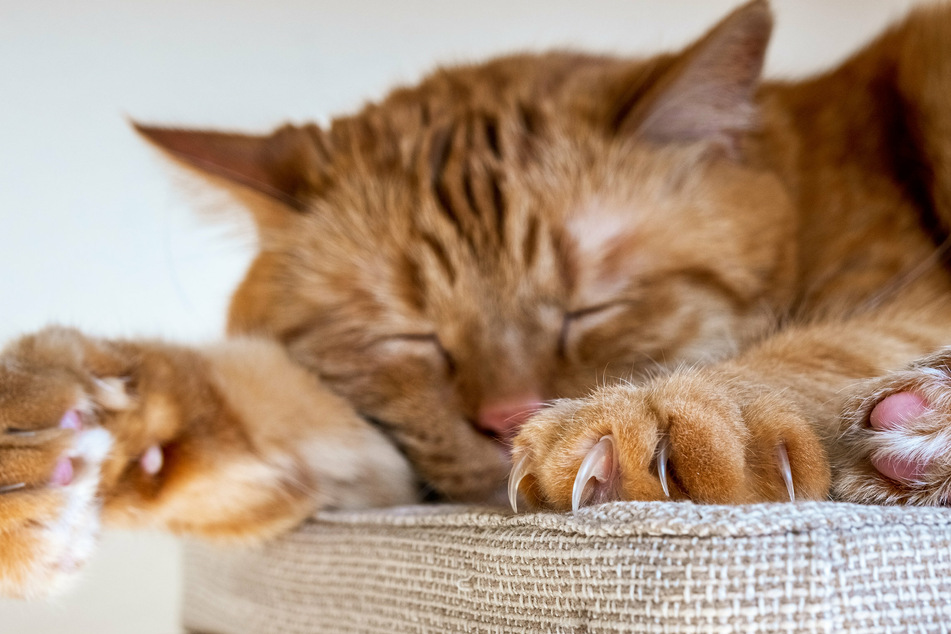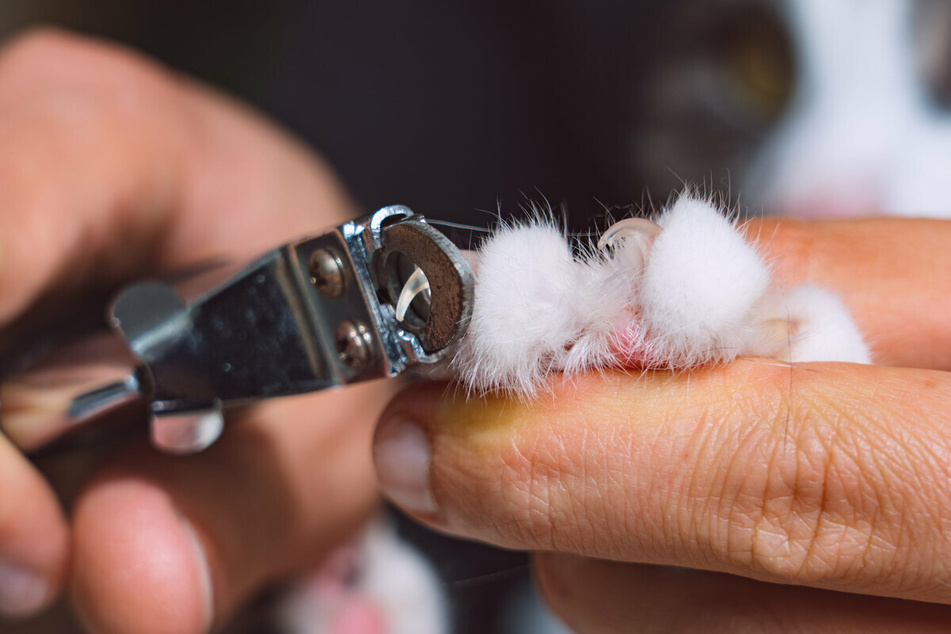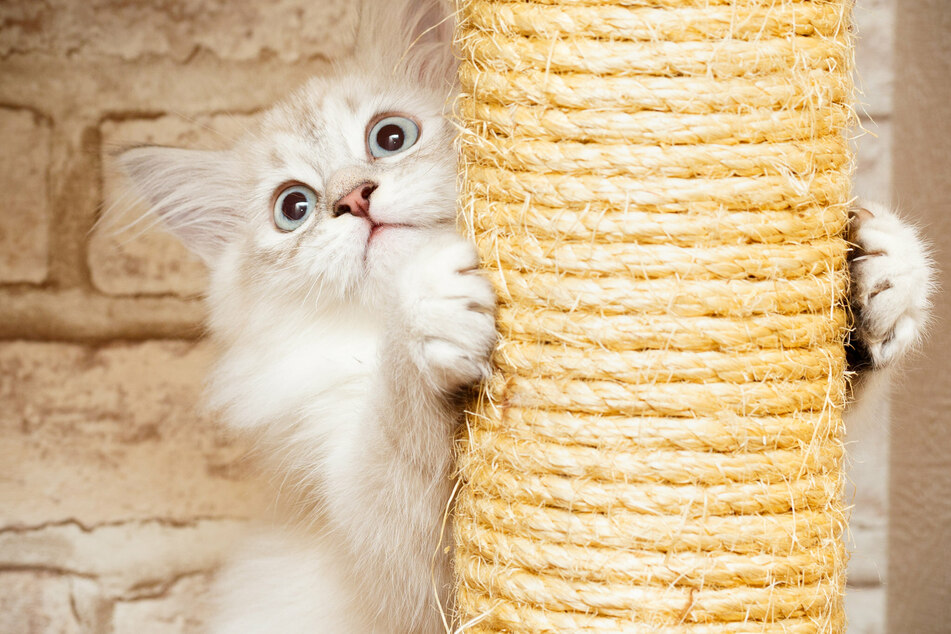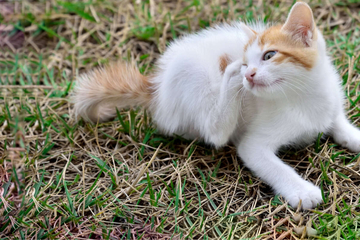How to trim cat nails: Should you do it, and what's the deal with declawing?
Most cats take care of their own claws, but others need to have them trimmed. How do you trim cat nails, should you do it, and what's up with declawing?

A cat's claws are one of their most important tools, vital for hunting, climbing, and fighting.
With all of this use, they can get worn out pretty fast, especially if you've got an outdoor cat living its best life. Indoor cats, however, don't get as much use out of them, which makes some owners wonder whether they need to help out.
No matter how much your wooden floor boards, carpets, and furniture suffers, indoors cats just won't be able to blunt those razor-sharp claws enough. Even a cat tower is often insufficient.
Long and untrimmed cat claws can cause a lot of discomfort, and can even lead to injuries if left unchecked.
This is why TAG24's cat guide is all about helping you help your feline friend. We'll take you through some tips for quick, safe, and easy trimming, as well as consider whether declawing is a good option.
Should you trim cat nails?
Cat nails should be trimmed if your kitty's daily activities do not naturally wear out their claws.
In other words, if your cat doesn't go outside very often, doesn't scratch its tower, or doesn't climb around on trees, then you might need to get snipping.
If your cat is very active, climbs trees, and generally wears down its claws, then you don't necessarily need to trim their nails, as that will occur naturally.
How often to trim cat nails
Check your cat's nails regularly and trim them when they get a bit too long. That's usually around once a month.
Are your cat's retracted claws fully or almost touching the floor when it's walking around? Then a good trimming is definitely on the menu. The same applies to claws that look torn-up and old.
Should you get your cat declawed?
You shouldn't declaw your cat, it's unnecessary and inhumane.
In fact, declawing has not only declined in regularity over the last few years, but has also been actively discouraged by the American Veterinary Medical Association.
The AVMA's policy has changed and declawing cats is now considered "ethically controversial, unnecessary in most instances, and a response to behaviors cats inherit and learn". Declawing can actually seriously hurt a cat's ability to climb, defend itself, and even walk.
How to cut cat nails at home

The best tip for ensuring a successful trim is making sure that your cat is calm, relaxed, or even sleepy before you commence the clipping.
Remember, your cat may love you, but it could still lash out if it doesn't like what you're doing.
Step 1: Get your cat relaxed and feeling good
Make sure that your cat is chilled out, put it on your lap, giving it a good pet, and just generally make sure it's happy.
Step 2: Hold your cat firmly and tightly
Once you have got your cat into a calm and peaceful mood, make sure to hold it tightly, but also carefully and delicately. You want to stop your kitty from making any jerky movements that may cause injuries during the nail trimming process.
Step 3: Gently push out their claws
Of course, a cat's claws need to be extended if they are to be effectively clipped. To do this, use two fingers and gently press on the ball of your cat's paw from above and below. When doing this, take special care that your cat doesn't suddenly pull away from you, as this could cause an injury.
Step 4: Start trimming your cat's claws
Trim your cat's nails in the direction of their growth and be careful not to cut them too short. There are blood vessels within the thicker part of their nails, and so you should only shorten them a little bit to avoid bleeding and damage to their nerves.
- Hold the clipper at 90° to the claw itself, to avoid any inaccurate chops or possible splinters.
- The handle of the claw clippers should be tilted sideways or towards the ceiling.
- Snip only the sharp bit of the nail, and don't cut any of the pink bit. This is the "quick" and contains blood vessels and nerves.
Remember to pamper your cat with cuddles and treats immediately after cutting its nails, so that it associates the event with something positive.
Keep in mind: It isn't the worst idea in the world to get your cat's claws trimmed by a professional. Your veterinarian, for example, will know how to do this without getting injured themselves, and without hurting the cat. If you are concerned, see the vet.

What to trim cat nails with
Just as with humans, it's important to use good tools when giving your cat a manicure. There are a number of different items to pick up, all available from most pet stores or veterinarian clinics.
You will need one of the following:
- Cat claw clippers
- Cat claw scissors
- Blood styptic pen
That last one is incredibly important, as the styptic pen can be used if something goes wrong during the trimming process. It is used to stem any potential bleeding.
How to hold a cat when trimming its nails
The best way to hold your cat is to rest it on your lap, leaning through the crook of your arm. From here, another person would ideally do the snipping while you hold on firmly so that your kitty doesn't wrestle its way away and potentially get hurt.
Another great option is actually to place your feline friend on a table and have someone calmly and carefully hold it down so that it can't move too much. Get your cat to stretch its paws out in front, hold the paws firmly, and get snippin'.
Trimming cat nails could be replaced with better scratching options

If your cat spends a great deal of time outdoors, it may be completely unnecessary for you to trim its nails.
As your cat gets older and spends less time outside, though, or if it is an indoor cat, you should provide it with alternative ways to sharpen and shorten its nails. You don't want them scratching on your nice furniture, after all.
There are a few good options out there:
- A proper cat scratching tree / post
- Disposable towels over furniture the cat likes to scratch
- Toys that the cat can scratch
- Scratching mats
You should have several alternative spots to scratch scattered around the apartment. But remember to always check your cat's nails. They may still need some trimming every now and again.
Cover photo: 123RF / Unitysphere




